Optical Amplifiers
Definition: devices for amplifying the power of light beams
More specific terms: amplifier chains, distributed amplifiers, multipass amplifiers, fiber amplifiers, ultrafast amplifiers, regenerative amplifiers, semiconductor optical amplifiers, power amplifiers, high-power amplifiers, tapered amplifiers, optical parametric amplifiers, Raman amplifiers
Opposite terms: optical attenuators
German: optische Verstärker
How to cite the article; suggest additional literature
Author: Dr. Rüdiger Paschotta
An optical amplifier is a device which receives some input signal and generates an output signal with higher optical power. Typically, inputs and outputs are laser beams, either propagating as Gaussian beams in free space or in a fiber. The amplification occurs in a so-called gain medium, which has to be “pumped” (i.e., provided with energy) from an external source. Most optical amplifiers are either optically or electrically pumped.
Laser Amplifiers
Most optical amplifiers are laser amplifiers, where the amplification is based on stimulated emission. Here, the gain medium contains some atoms, ions or molecules in an excited state, which can be stimulated by the signal light to emit more light into the same radiation modes. Such gain media are either insulators doped with some laser-active ions, or semiconductors (see below). Doped insulators for laser amplification are laser crystals and glasses used in bulk form, or some types of waveguides, such as optical fibers (→ fiber amplifiers, see Figure 1). The laser-active ions are usually either rare earth ions or (less frequently) transition-metal ions. A particularly important type of laser amplifier is the erbium-doped fiber amplifier, which is used mostly for optical fiber communications.
Semiconductor optical amplifiers can be electrically or optically pumped. In most cases, electrical pumping is used, which is highly convenient and allows for very compact amplifiers. While ordinary semiconductor optical amplifiers are quite limited in output power, substantially higher pulse (up to several watts) can be obtained from tapered amplifiers.

Amplifiers Based on Optical Nonlinearities
In addition to stimulated emission, there also exist other physical mechanisms for optical amplification, which are based on various types of optical nonlinearities. Optical parametric amplifiers are usually based on a medium with χ(2) nonlinearity, but there are also parametric fiber devices using the χ(3) nonlinearity of a fiber. Other types of nonlinear amplifiers are Raman amplifiers and Brillouin amplifiers, exploiting the delayed nonlinear response of a medium.
An important difference between laser amplifiers and amplifiers based on nonlinearities is that laser amplifiers can store some amount of energy, whereas nonlinear amplifiers provide gain only as long as the pump light is present.
Ultrafast Amplifiers
Amplifiers of different kinds may also be used for amplifying ultrashort pulses. In some cases, a high repetition rate pulse train is amplified, leading to a high average power while the pulse energy remains moderate. In other cases, a much higher gain is applied to pulses at lower repetition rates, leading to high pulse energies and correspondingly huge peak powers. An essential point is the ability of a laser amplifier to store some amount of pump energy until the amplified pulse extracts led energy. For more details, see the article on ultrafast amplifiers.
Multipass Arrangements, Regenerative Amplifiers, and Amplifier Chains
A bulk-optical laser amplifier often provides only a moderate amount of gain, typically only few decibels. This applies particularly to ultrashort pulse amplifiers, since they must be based on broadband gain media, which tend to have lower emission cross sections. The effective gain may then be increased either by arranging for multiple passes of the radiation through the same amplifier medium (multipass amplifier), or by using several amplifiers in a sequence (→ amplifier chains).

Multipass operation (Figure 2) can be achieved with combinations of mirrors (for several passes with slightly different angular directions), or (mostly for ultrashort pulses) with regenerative amplifiers.
For very large amplification factors, multi-stage amplifiers (amplifier chains) are often better suited. For example, one may have a low-power but high-gain preamplifier followed by a power amplifier or booster amplifier, which delivers a modest gain but a high output power level. Between the amplifier stages, the optical signal may be spatially or spectrally filtered in various ways, helping e.g. to achieve a high beam quality and/or a shorter pulse duration. Reasons for choosing a multi-stage amplifier design may be exactly the opportunity for filtering between the stages, or the use of adapted parts for the different power levels – for example, a high-gain amplifier fiber with small effective mode area for a preamplifier and a double-clad large mode area fiber for the power amplifier.
Multimode and Single-mode Amplifiers
Some types of optical amplifiers are intrinsically multimode devices. For example, an amplifier based on bulk laser crystal can amplify multimode beams and can also handle beams with different angular positions and directions in certain ranges, which makes it possible to construct a multipass amplifier (see above).
Other optical amplifiers are single-mode devices. For example, many fiber amplifiers and semiconductor optical amplifiers are based on a single-mode fiber or waveguide. In such cases, only a single mode can be amplified, and that has to be mode-matched to the amplifier.
When a single-mode laser amplifier provides a high gain within some bandwidth, it inevitably generates a substantial level of amplified spontaneous emission (ASE). In a multimode amplifier, this effect is correspondingly stronger. Even if ASE is negligible (for lower gain), a multimode amplifier typically exhibits more power losses by spontaneous emission (and thus has a lower gain efficiency) because a larger amount of laser-active material has to be kept in the excited state.
Gain Saturation
For high values of the input light intensity or fluence, the amplification factor of a gain medium saturates, i.e., is reduced (→ gain saturation). This is a natural consequence of the fact that an amplifier cannot add arbitrary levels of energy or power to an input signal. However, as laser amplifiers (particularly those based on solid-state gain media) store some amount of energy in the gain medium, this energy can be extracted within a very short time. Therefore, during some short time interval the output power can exceed the pump power by many orders of magnitude.
Detrimental Effects of High Gain
For high gain, weak parasitic reflections can cause parasitic lasing, i.e., oscillation without an input signal, or additional output components not caused by the input signal. This effect then limits the achievable gain. Even without any parasitic reflections, amplified spontaneous emission may extract a significant power from an amplifier.
Amplifier Noise
Generally, amplifiers do not only amplify any intensity or phase noise of the input, but also add some excess noise. This applies not only to laser amplifiers, where excess noise can partly be explained as the effect of spontaneous emission, but also to nonlinear amplifiers. The noise figure e.g. of a fiber amplifier is a measure for how much excess noise occurs. Quantum optics dictates a minimum amount of excess intensity and phase noise for phase-insensitive amplifiers.
Important Parameters of an Optical Amplifier
Important parameters of an optical amplifier include:
- the maximum gain, specified as an amplification factor or in decibels (dB)
- the saturation power, which is related to the gain efficiency
- the saturated output power (for a given pump power)
- the power efficiency and pump power requirements
- the saturation energy
- the time of energy storage (→ upper-state lifetime)
- the gain bandwidth (and possibly smoothness of gain spectrum)
- the noise figure and possibly more detailed noise specifications
- the sensitivity to back-reflections
- the number of modes it can amplify (see above, multimode and single-mode amplifiers)
Different kinds of amplifiers differ very much e.g. in terms of saturation properties. For example, rare-earth-doped gain media can store substantial amounts of energy, whereas optical parametric amplifiers provide amplification only as long as the pump beam is present. As another example, semiconductor optical amplifiers store much less energy than fiber amplifiers, and this has important implications for optical fiber communications.
Applications of Optical Amplifiers
Typical applications of optical amplifiers are:
- An amplifier can boost the (average) power of a laser output to higher levels (→ master oscillator power amplifier = MOPA).
- It can generate extremely high peak powers, particularly in ultrashort pulses, if the stored energy is extracted within a short time.
- It can amplify weak signals before photodetection, and thus reduce the detection noise, unless the added amplifier noise is large.
- In long fiber-optic links for optical fiber communications, the optical power level has to be raised between long sections of fiber before the information is lost in the noise.
Suppliers
The RP Photonics Buyer's Guide contains 68 suppliers for optical amplifiers. Among them:

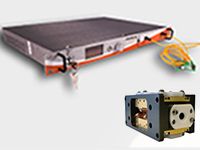
Lumibird
Lumibird manufactures an extensive range of mature and custom-designed optical fiber amplifiers. Our CW models are used for atom cooling, free space communication or optical remote sensing etc., while our pulsed models are used for applications such as high peak power generation or wind sensing LiDAR. Lumibird also manufactures diode-pumped solid-state laser heads used as optical amplifiers.

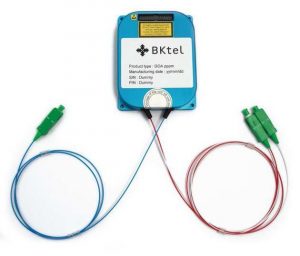
RPMC Lasers
RPMC Lasers offers fiber amplifiers and DPSS amplifiers between 1064 nm and 1550 nm for both continues wave (CW) and pulsed seed sources. These OEM amplifiers are ideal for integration into MOPAs allowing of signal integrity to be maintained while increasing output power.

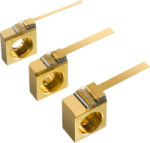
eagleyard Photonics
Tapered lasers combine the beam quality of a ridge waveguide laser with the high power known from broad area lasers. If you need high power and small spot size, this is the laser for you. eagleyard manufactures tapered lasers between 730 and 1083 nm with high brightness and the smallest divergence. Output powers from 500 mW to 2000 mW are available.

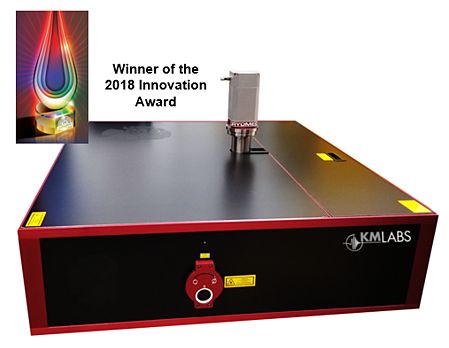
Kapteyn-Murnane Laboratories
The RAEA™ Ti:sapphire amplifier builds on KMLabs’ 20-year tradition of leadership in ultrafast science, bringing the unmatched flexibility of previous amplifier systems into a single, hands-free platform. Engineered for high harmonic generation (HHG): now you can stop worrying about the pump. Beyond serving the multitude of applications for which Ti:sapphire lasers have become ubiquitous, RAEA is especially designed as an unparalleled source for producing short-wavelength light via high harmonic generation. The award-winning RAEA has been engineered for the most challenging applications rather than the most common, and was specifically designed with the XUUS system in mind for high harmonic generation. From better beam quality and stability, to remote alignment and lower maintenance needs, RAEA serves as a repeatable and reliable source for any of your high harmonic generation needs.

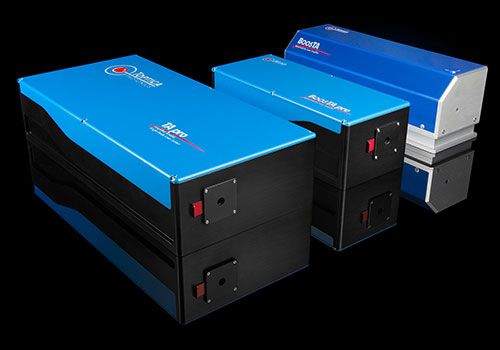
TOPTICA Photonics
For a variety of applications the output power of single-mode laser diodes is not sufficient. Here TOPTICA offers tapered amplifiers in Master Oscillator Power Amplifier (MOPA) configuration as well as stand-alone amplifier systems. Tapered amplifiers feature high powers up to 3.5 W with excellent beam quality and without compromising the favorable spectral qualities of their master lasers. MOPA systems feature TOPTICA's low noise and narrow linewidth master lasers and offer convenient and safe operation with DLC pro.
Questions and Comments from Users
Here you can submit questions and comments. As far as they get accepted by the author, they will appear above this paragraph together with the author’s answer. The author will decide on acceptance based on certain criteria. Essentially, the issue must be of sufficiently broad interest.
Please do not enter personal data here; we would otherwise delete it soon. (See also our privacy declaration.) If you wish to receive personal feedback or consultancy from the author, please contact him e.g. via e-mail.
By submitting the information, you give your consent to the potential publication of your inputs on our website according to our rules. (If you later retract your consent, we will delete those inputs.) As your inputs are first reviewed by the author, they may be published with some delay.
Bibliography
| [1] | P. Urquhart (ed.), Advances in Optical Amplifiers (open-access online edition available), InTech, Rijeka, Croatia (2011) |
| [2] | R. Paschotta, tutorial on "Fiber Amplifiers" |
| [3] | R. Paschotta, tutorial on "Modeling of Fiber Amplifiers and Lasers" |
See also: optical power, multipass amplifiers, amplifier noise, amplified spontaneous emission, amplification factor, fiber amplifiers, Raman amplifiers, semiconductor optical amplifiers, tapered amplifiers, optical parametric amplifiers, regenerative amplifiers, ultrafast amplifiers, master oscillator power amplifier, chirped-pulse amplification, divided-pulse amplification
and other articles in the category optical amplifiers
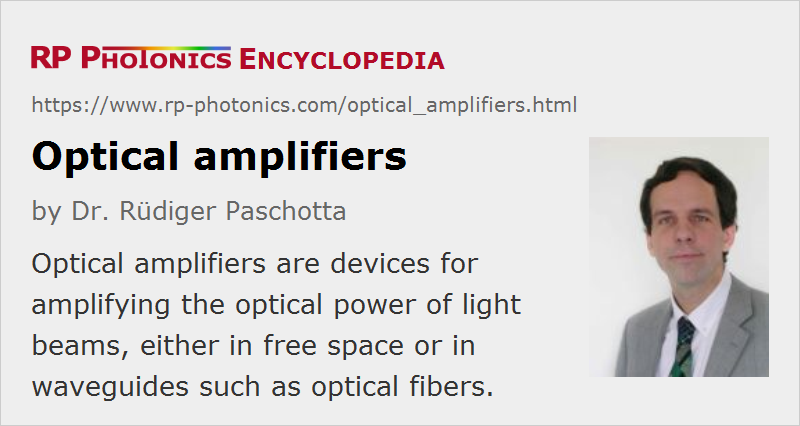 |




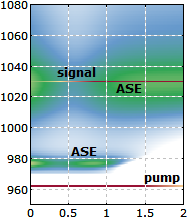


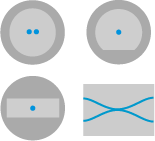

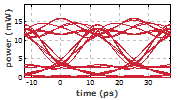
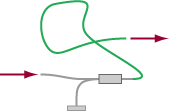
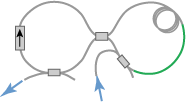
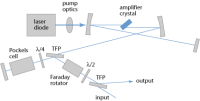

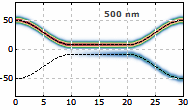
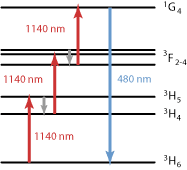

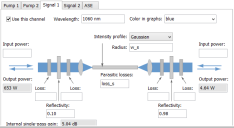
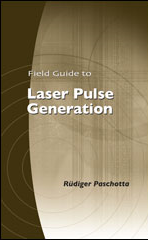
If you like this page, please share the link with your friends and colleagues, e.g. via social media:
These sharing buttons are implemented in a privacy-friendly way!